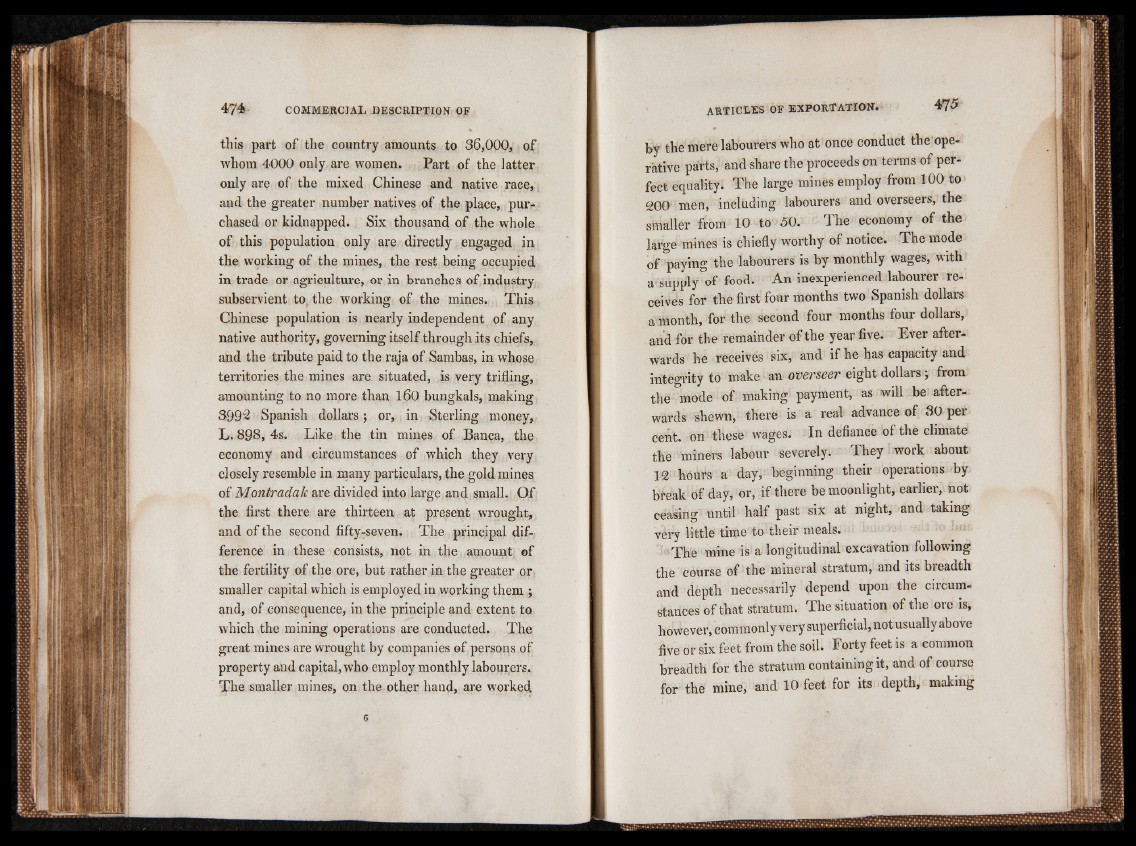
this part of the country amounts to 36,000, of
whom 4000 only are women. Part of the latter
only are of the mixed Chinese and native race,
and the greater number natives of the place, purchased
or kidnapped. Six thousand of the whole
of this population only are directly engaged in
the working of the mines, the rest being occupied
in trade or agriculture, or in branches of industry
subservient to, the working of the mines. This
Chinese population is nearly independent of any
native authority, governing itself through its chiefs,
and the tribute paid to the raja of Sambas, in whose
territories the mines are situated, is very trifling,
amounting to no more than 160 bungkals, making
3992 Spanish dollars; or, in Sterling money,
L. 898, 4s. Like the tin mines of Banca, the
economy and circumstances of which they very
closely resemble in many particulars, the gold mines
of Montradak are divided into large and small. Of
the first there are thirteen at present wrought,
and of the second fifty-seven. The principal difference
in these consists, not in the amount ©f
the fertility of the ore, but rather in the greater or
smaller capital which is employed in working them ;
and, of consequence, in the principle and extent to
which the mining operations are conducted. The
great mines are wrought by companies of persons of
property and capital, who employ monthly labourers.
The smaller mines, on the other hand, are worked
by the mere labourers who at once conduct the operative
parts, and share the proceeds on terms of perfect
equality. The large mines employ from 100 to
200 men, including labourers and overseers, the
smaller from 10 to 50. The economy of the
large mines is chiefly worthy of notice. The mode
of paying the labourers is by monthly wages, with
a supply of food. A n inexperienced labourer receives
for the first four months two Spanish dollars
a month, for the second four months four dollars,
and for the remainder of the year five. Ever afterwards
he receives six, and if he has capacity and
integrity to make an overseer eight dollars; from
the mode of making payment, as will be afterwards
shewn, there is a real advance of 30 per
cent, on these wages. In defiance of the climate
the miners labour severely. They work about
12 hours a day, beginning their operations by
break of day, or, if there be moonlight, earlier, not
ceasing until half past six at night, and taking
very little time to their meals.
rfhe mine is a longitudinal excavation following
the course of the mineral stratum, and its bieadth
and depth necessarily depend upon the circumstances
of that stratum. The situation of the ore is,
however, commonly very superficial, not usually above
five or six feet from the soil. Forty feet is a common
breadth for the stratum containing it, and of course
for the mine, and 10 feet for its depth, making